As the automotive industry continues to chase the ever-growing niches of the buyer-favoured SUV market, Mazda introduces the CX-30 to enter the line-up between the CX-3 and CX-5. The CX-30 builds off its small car sibling, the Mazda 3, angling towards the premium end of the small crossover segment. The CX-30 aims to offer the practicality of an SUV with the dynamics of a hatchback.
Importantly, Mazda describes the new CX-30 as “just right” for New Zealand. I hoped to find out exactly what they meant during our test.
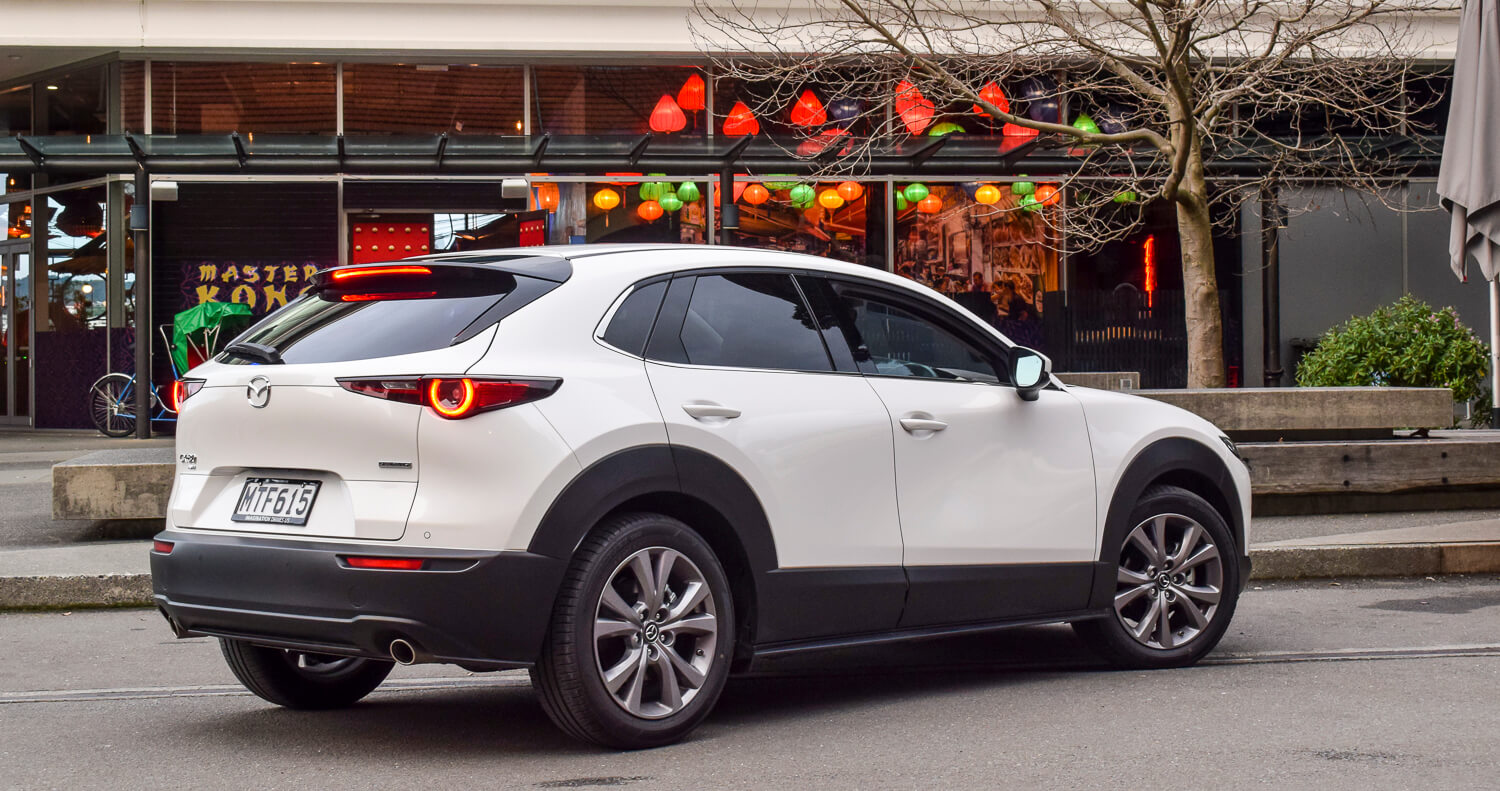
What’s In The 2020 Mazda CX-30 Range?
Mazda currently offers the CX-30 in three trim levels, with a fourth spec, top-of-the range Takami model due to arrive in the future. Our test vehicle, the Limited, currently sits at the top of the available range in New Zealand.
Drivelife’s Rob Cubley has already tested the cheaper CX-30 GSX, you can read about it here.
The CX-30 has two engine offerings, including a 2.0-litre 4-cylinder Skyactiv engine making 114kW of power and 200Nm of torque, plus a 2.5-litre 4-cylinder Skyactiv engine making 139kW of power 252Nm of torque. Both are driven by a 6-speed torque-convertor automatic transmission via front and all-wheel drive configurations. The Limited comes as an AWD, using the latter of these engine offerings.
The CX-30 Limited is well-equipped for its $50,990 price-tag. The Limited features; 18” alloys, SatNav, Apple Carplay and Android Auto capability, Bose 12-speaker audio, heated front seats, dual-zone climate with air-conditioning, 10-way power driver’s seat with memory, privacy glass, reverse camera, keyless entry and start, front and rear parking sensors, radar cruise control, heads-up display, automatic LED headlights, heated mirrors, auto-dimming rear-view mirror, electric parking brake, i-stop, Mazda’s G-Vectoring Control, Cylinder Deactivation, ABS, Blind Spot Monitoring, Driver Attention Alert, DSC, EBD, Emergency Brake Assist, Hill Launch Assist, Traffic Sign Recognition, Tyre pressure monitoring, additional Smart Brake Support features and a sunroof.
The CX-30 is offered in 8 different colours – Deep Crystal Blue, black, silver, two greys, Pearl White, Titanium Flash Mica, and the well-revered option of Soul Red Crystal Metallic. Our test vehicle came in Pearl White.
You can read more about the Mazda CX-30 range on the Mazda New Zealand website.
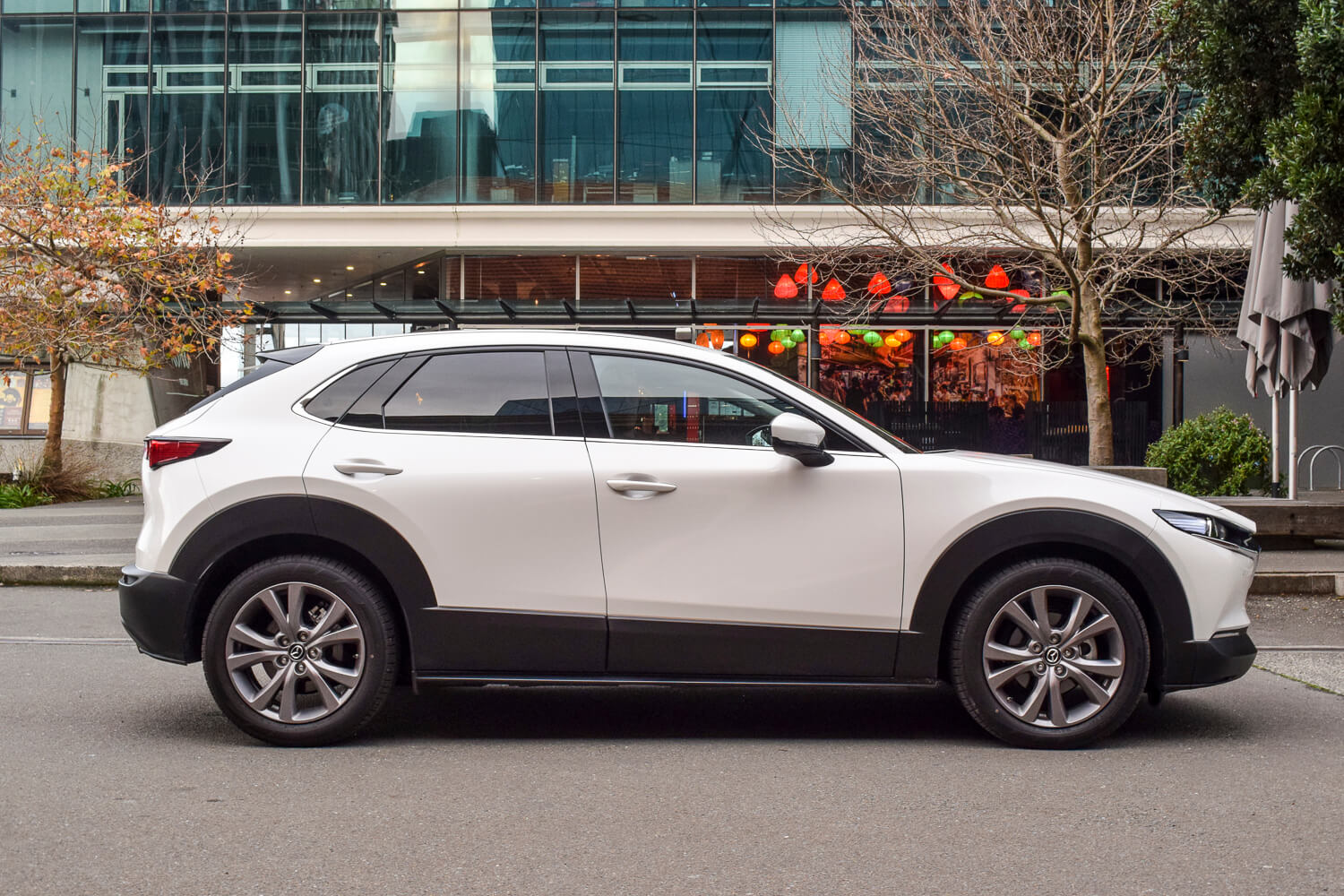
First Impressions Of The 2020 Mazda CX-30 Limited
When I first laid eyes on the CX-30, I was quite surprised by the size of the vehicle. The CX-30 appears to have a wide stance and sits lower to the ground than some photos would suggest. The body doesn’t seem as top-heavy as other SUV’s and crossovers. The overall profile of the CX-30 is quite sporty. This being said, I wasn’t exactly expecting it to be a large vehicle, as much of this vehicle is similar to the Mazda 3.
The CX-30 applies Mazda’s hallmark Kodo design language, using their distinctive front-end grill and lights combination. It can easily be identified as part of the Mazda family.
Speaking of the lights, those on the CX-30 are certainly a strong point. The front and rear LED lights and subtle daytime running lights integrated into the front bumper are totally classy. They definitely lift the appearance of the CX-30 and are among many of the visual draws to this SUV.
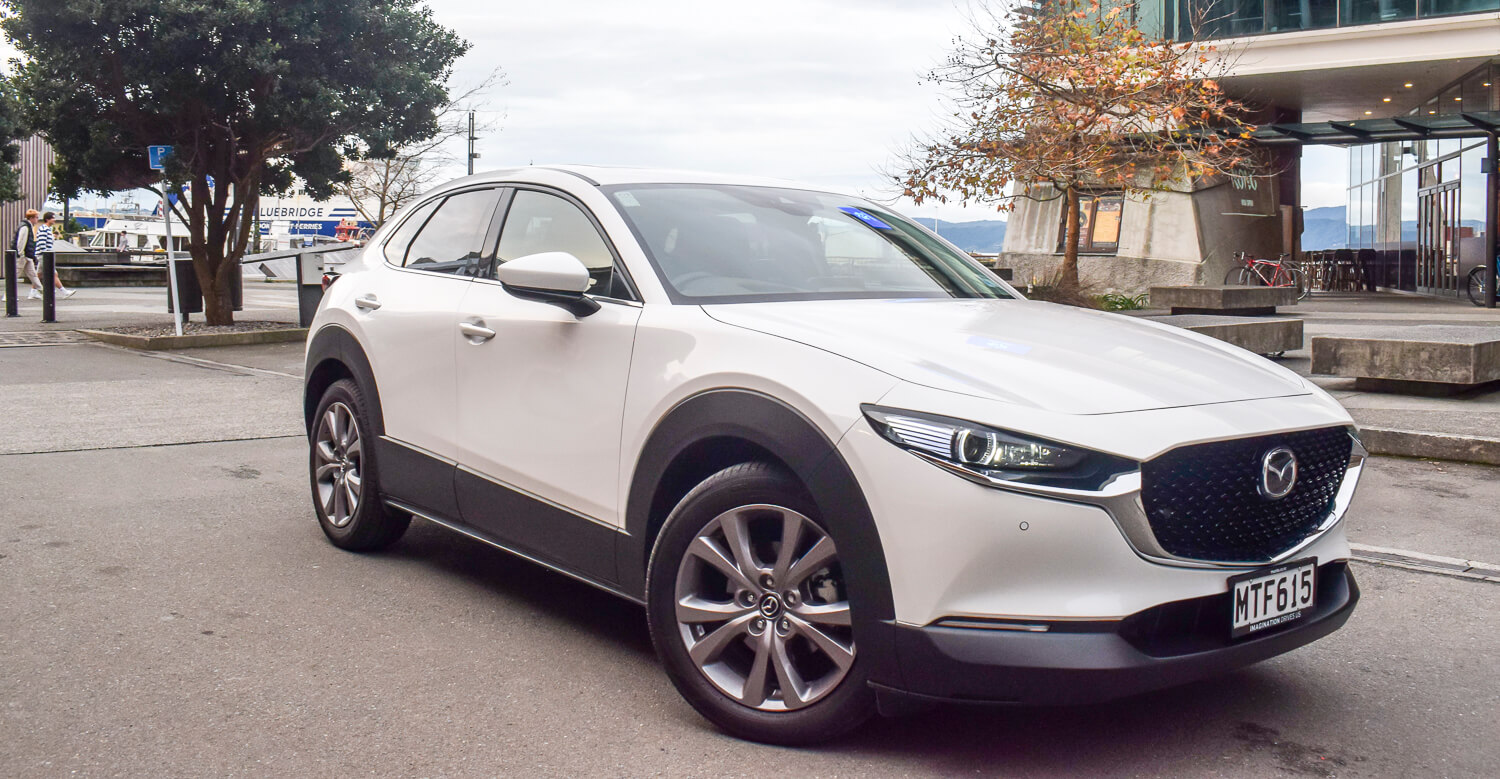
From pictures, the plastic cladding on the lower of the body can appear over-the-top. Though after viewing it in-person, I would say that the trim down the side of the body is just right and serves to make the CX30’s body appear less SUV-like. Overall, it minimises the bloated look that some crossovers fall victim to. The rear bumper does take the plastic up a notch, though it didn’t bother me as much over time. Besides, the real draw from the rear of the CX30 are those LED lights!
The main design issue I had with the CX-30 was far more subtle. There’s an odd overlap of the front fender where the A-pillar and front door converge. It definitely doesn’t stick out, nor is it particularly unpleasant. I’m sure Mazda does this for some logical reason, although, it is something you can’t ‘unsee’.
At first, I was feeling mildly disappointed that our test vehicle did not come in the optional Soul Red Metallic, which is certainly Mazda’s best paint offering. The Pearl White our test vehicle came in didn’t initially stand out on the overcast Wellington evening when I collected the car. It wasn’t until I saw the CX-30 later that evening under a street light, where I began to really appreciate the colour. The metallic finish to the Pearl White on the Mazda really sold me on the colour, and definitely left an impression that you’d only get if you paid a lot more money. I happened to be parked next to a white Volkswagen Golf R when first making this observation. The colour of the Mazda drew the eye and made the Golf R seem visually uninteresting. Whoever is running the colour department at Mazda deserves a hefty bonus!
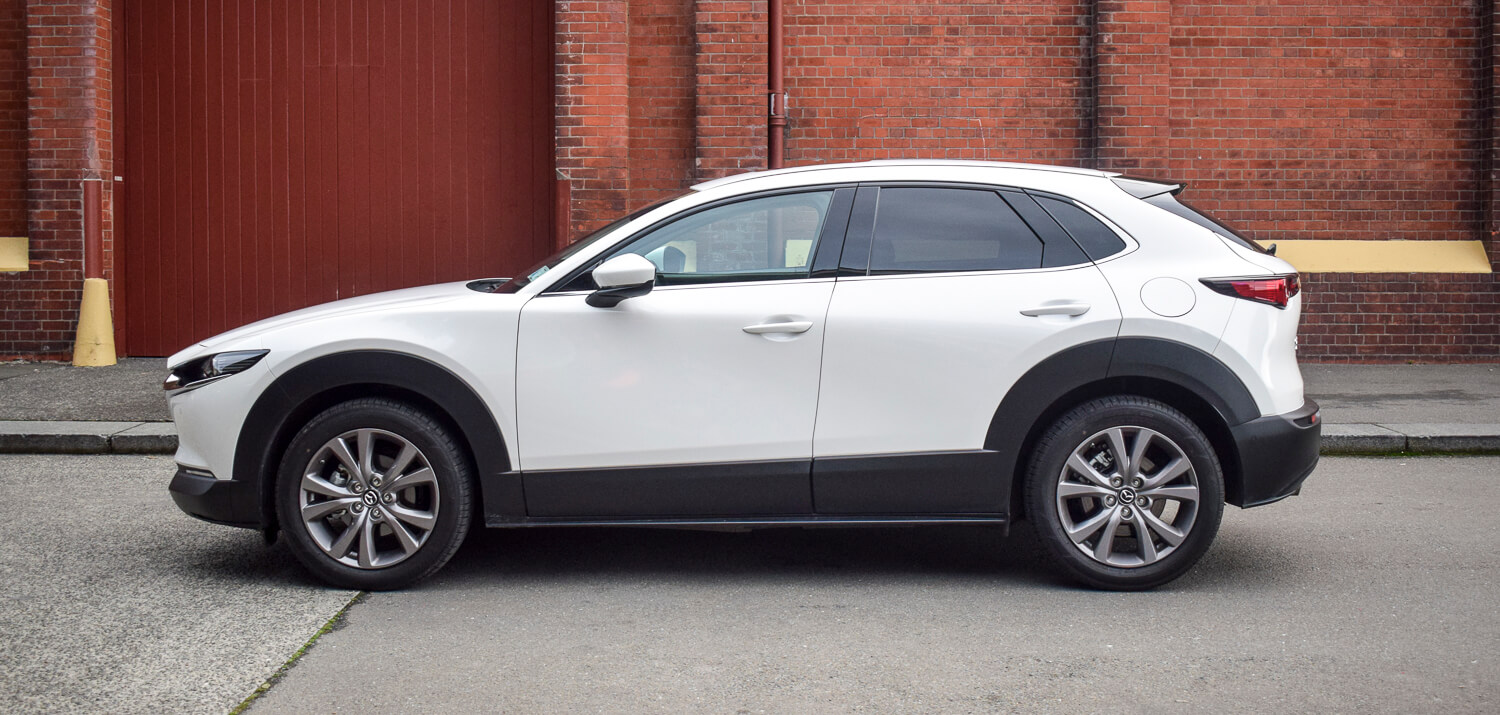
After this, I found myself constantly looking back towards the car to see where I could catch the light reflecting off the paint. Although a subtle treatment, I imagine this would be a rewarding bonus for some buyers.
Overall, the CX-30 is easily one of the better-looking crossovers to my eyes. The stance, the LED lighting design and the paint quality gives off a premium impression, setting the CX-30 apart from competitors in this price segment.
What’s The Interior Like On A 2020 Mazda CX-30 Limited?
Stepping inside the CX-30, you are immediately greeted with one of the CX-30’s best qualities – the interior. I was blown away by the quality of the CX-30’s interior, especially for the segment this small crossover competes in.
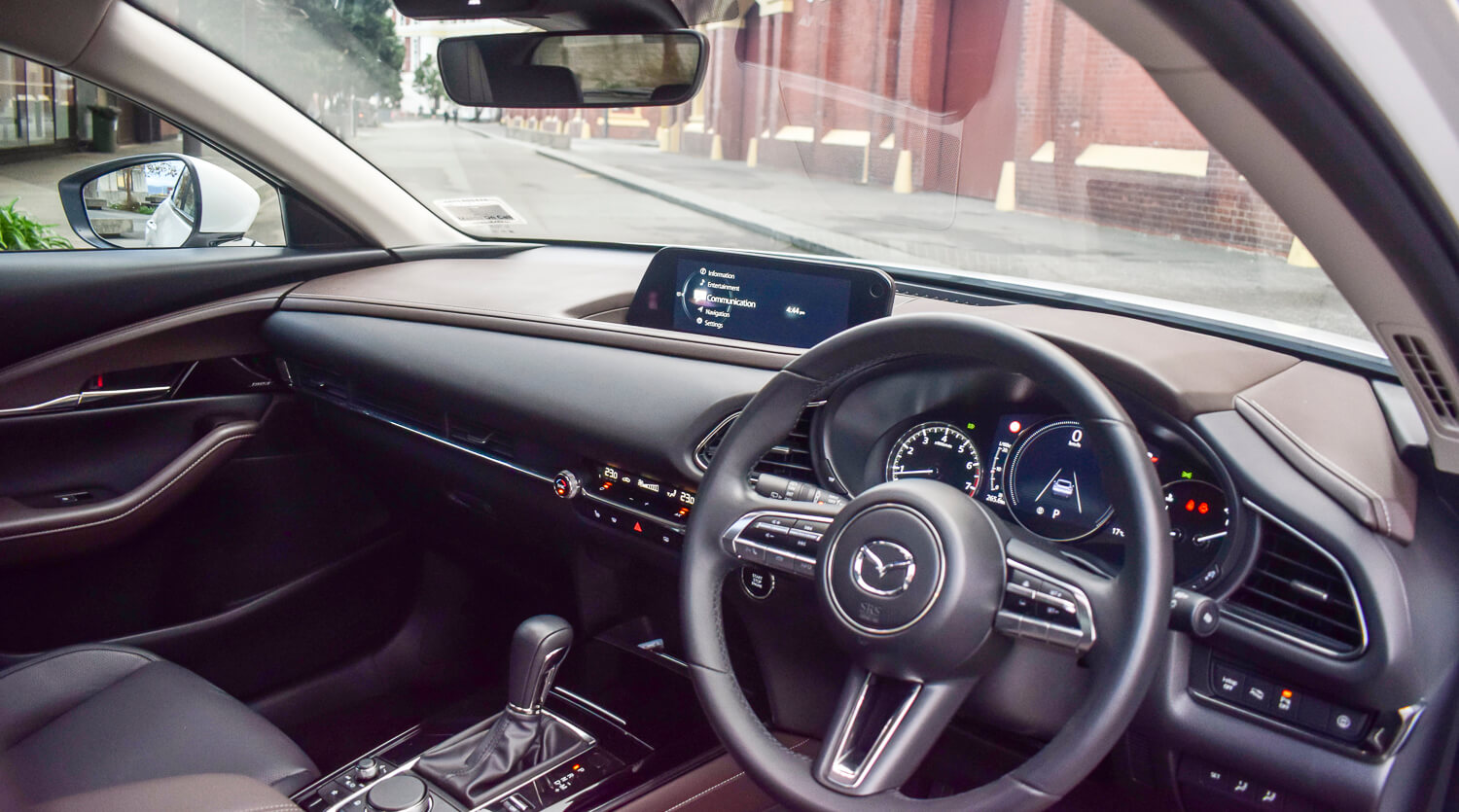
The door closes to form a continuous line sweeping across a twin-levelled dashboard. Both levels are wrapped in either brown or black leather with contrasting stitches. They say you shouldn’t mix brown and black leather when dressing in a corporate wardrobe. Thankfully, Mazda disregarded this advice when appointing the interior of the CX-30 Limited, as the end result looks fantastic.
The dash is nicely complemented with a minimalistic climate control cluster and infotainment display. All the interior switchgear feels strong and tactile, while both the climate control gauges and air-vents have brushed metal finishes.
Leather and soft-touch materials wrap many of the visible and commonly grabbed surfaces. The interior does have some hard plastics, though Mazda has gone to some lengths to ensure that you’re less likely to feel them. The centre and side armrests are wrapped in padded leather, as well as there being padded leather down the side of the centre console to rest your knees against. Other parts of the dashboard and the door cards are also wrapped in soft-touch materials – so much in some areas, that I could sink my finger into it.
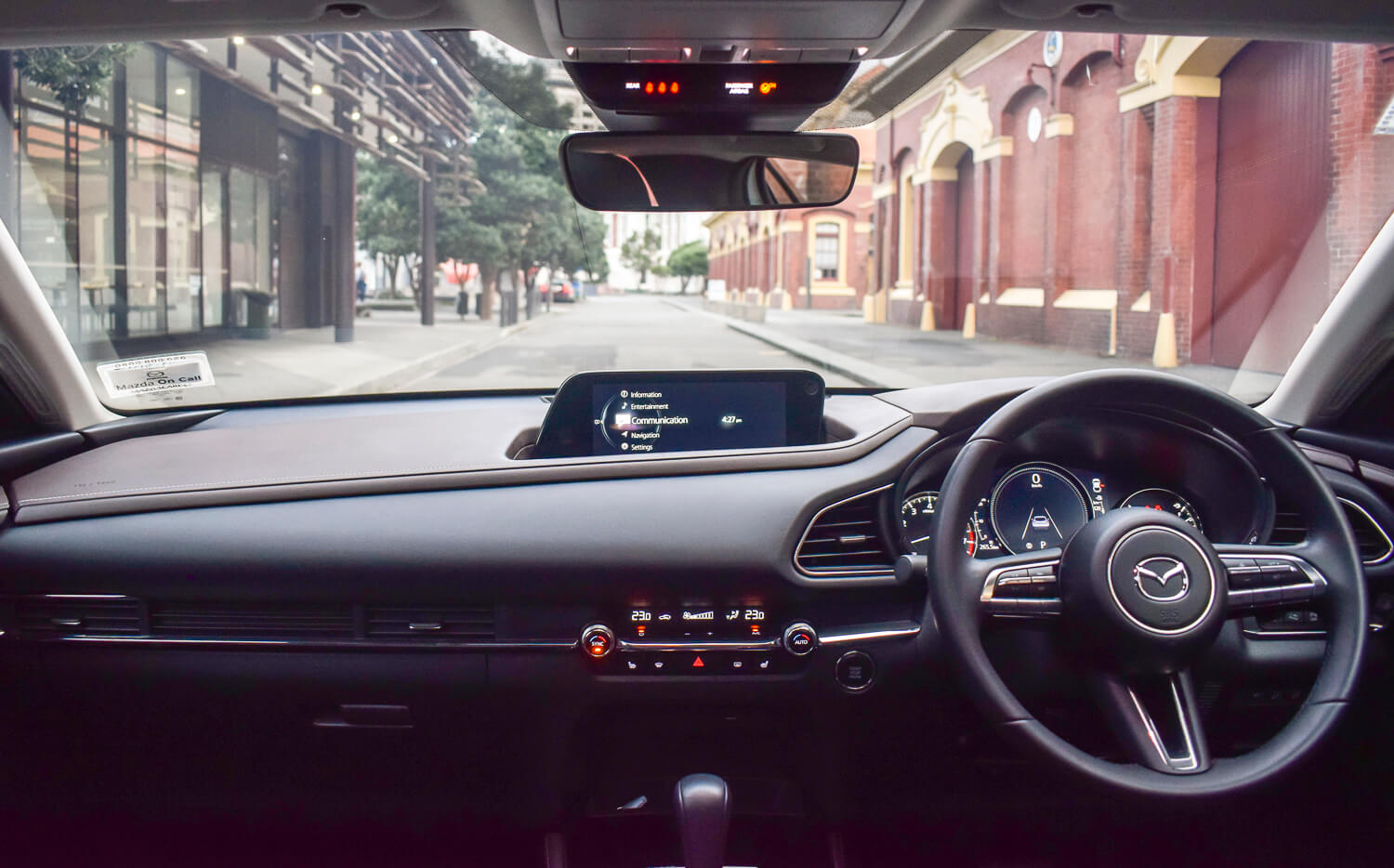
The seats are supportive and nicely bolstered. The electric front driver’s seat has adjustable lumbar too. Unfortunately, you read the ‘seat’ part correctly. Only the front driver’s seat is electric, while the front passenger has a manual seat. This aside, Mazda has obviously paid attention to the seats, as they definitely score high on the comfort scale. The seats also have subtle brown leather perforation under the black leather, which adds a nice visual touch.
The centre console is solid and is surrounded with some sort of deep-black faux carbon-fibre plastic finish. You’d be forgiven for thinking it’s piano black, as you’d need to look closely to see the weave pattern. The result isn’t much different, but it does appear less glossy and slightly less finger-printy.
The steering wheel continues the minimalist look, with the various controls nicely integrated into the wheel spokes. The controls are all intuitive and have the same sturdy feel to them.
The instrument cluster display is definitely a strong point of the CX-30. The dash is digital, yet retains some fixed dials for fuel, temperature and engine rpm. The screens are clear and simple to use, but I most appreciated that displays were solely reserved for driving information. It wasn’t over-complicated with navigation screens or other non-driving related information.
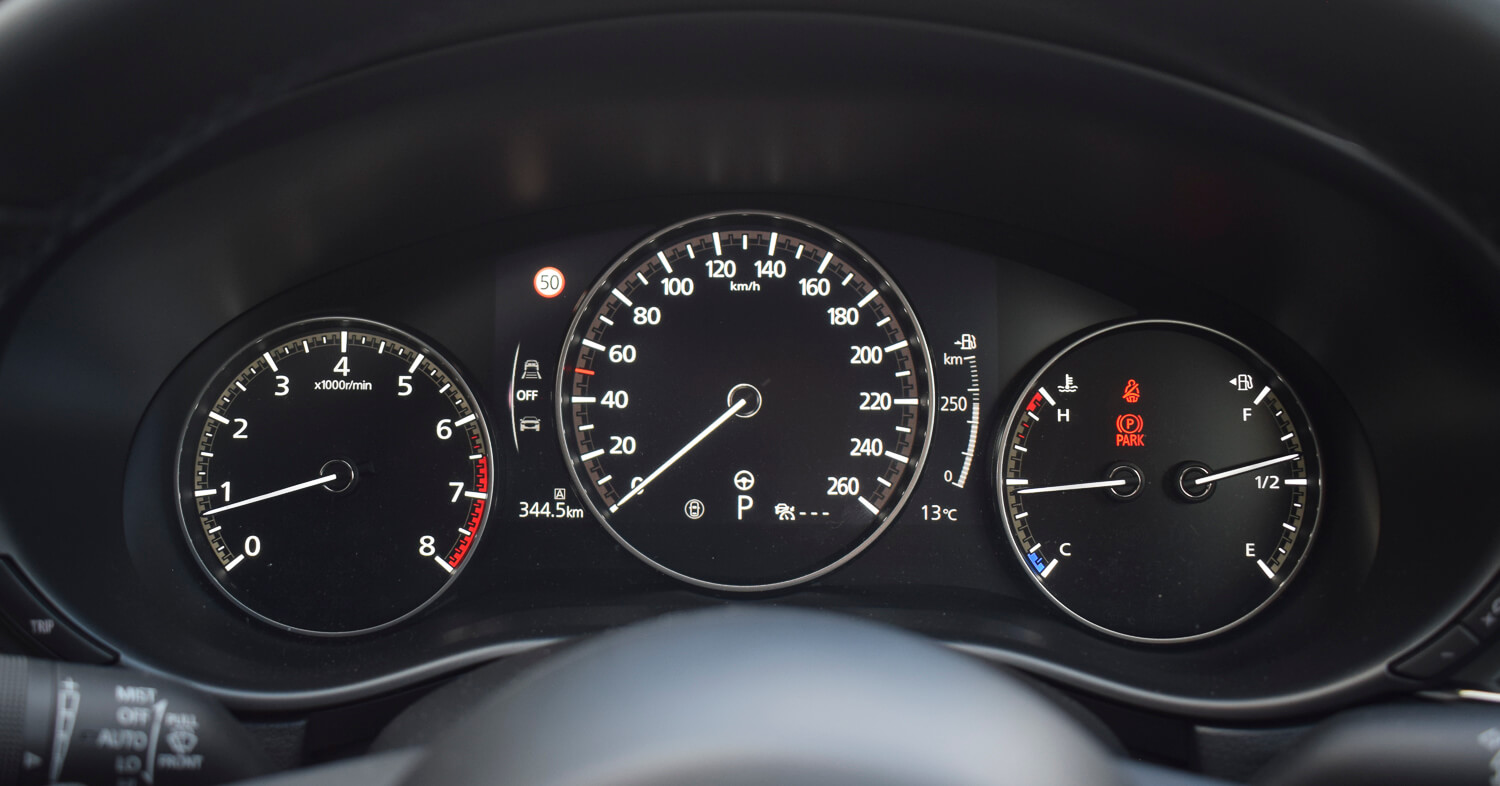
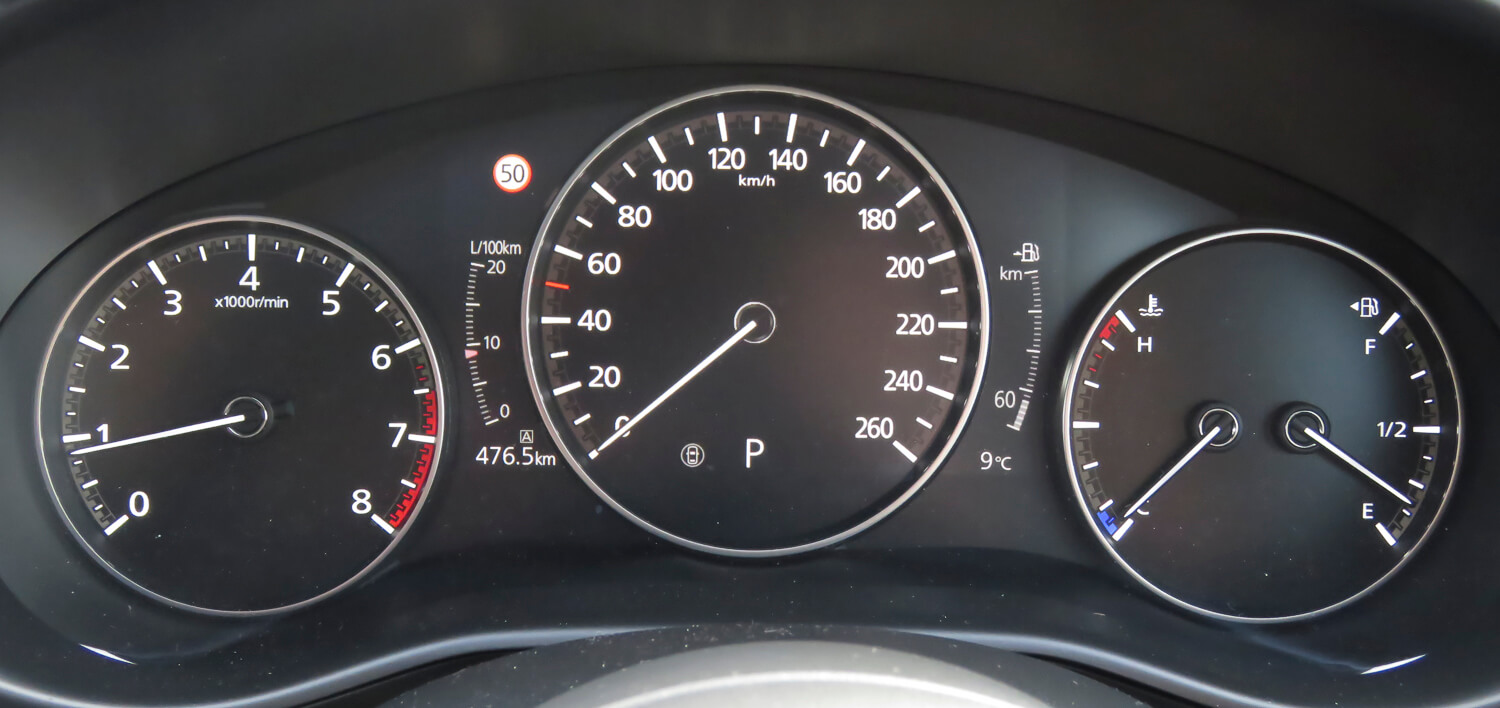
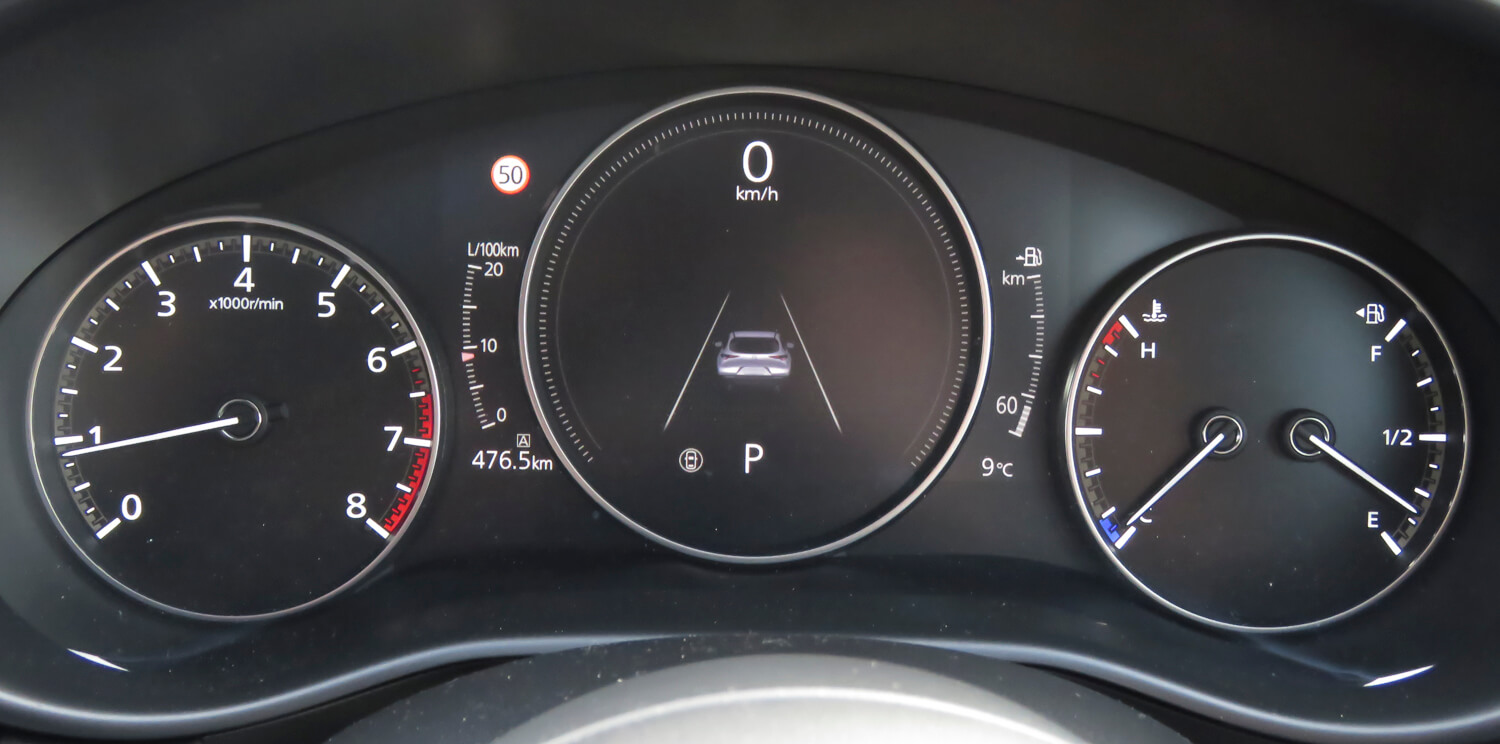
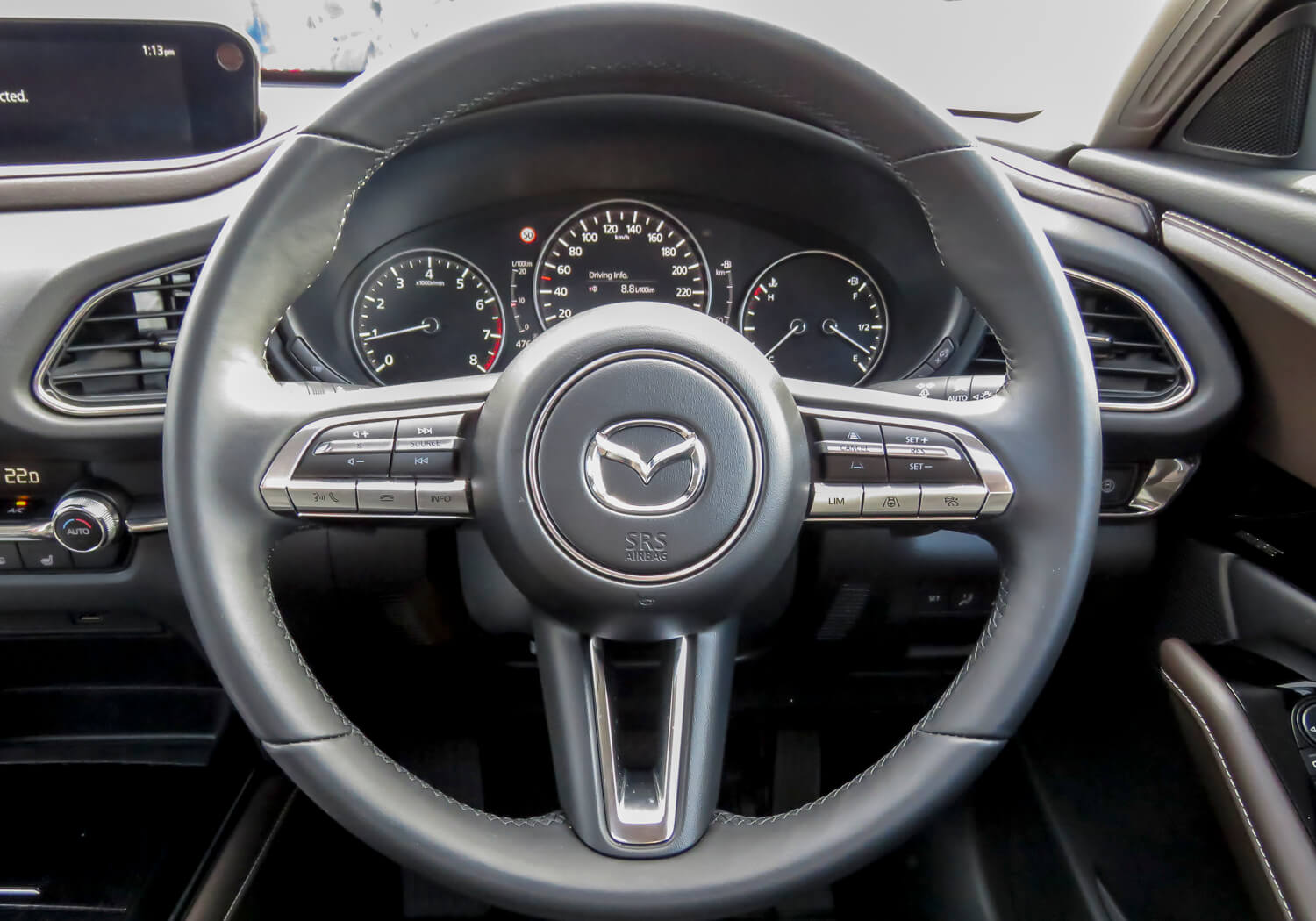
The centre infotainment is mounted slightly higher and further back on the dash, sitting in a shallow cavity aimed at the driver. The 8.8-inch screen is orientated like a smartphone in portrait mode. It does appear small at first, but I found that it was just the right size. The result is the screen lies within the peripheral vision of the driver, while not dominating the cabin like some other manufacturers are guilty of.
The infotainment is also not a touchscreen, instead utilises a jog dial to navigate through the menus. In an age of the smartphones and touchscreens being the norm, this is a bold move by Mazda. However, after a short learning curve, everything became natural. The screen is high-resolution and the menus were all easy-to-use and responsive. All the physical controls fell nicely to hand and included other hard controls, such as a volume knob, return and favourites button offset from the main jog dial.
The SatNav works well and integrates with the heads-up display. I also appreciated some of the nice touches on the nav screen, including the textured water and building graphics in 3-D mode.
I honestly couldn’t fault Mazda’s system and at no point was ever I compelled to switch over to Android Auto (or Apple Carplay).
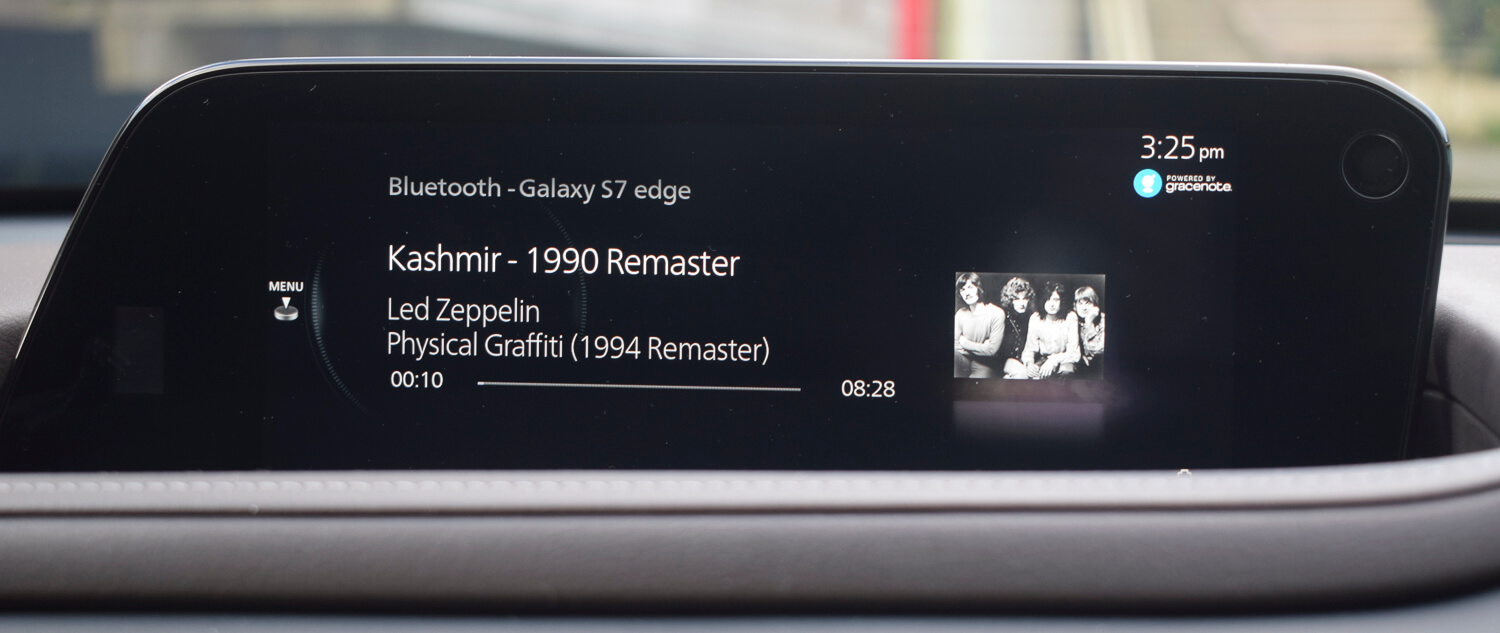
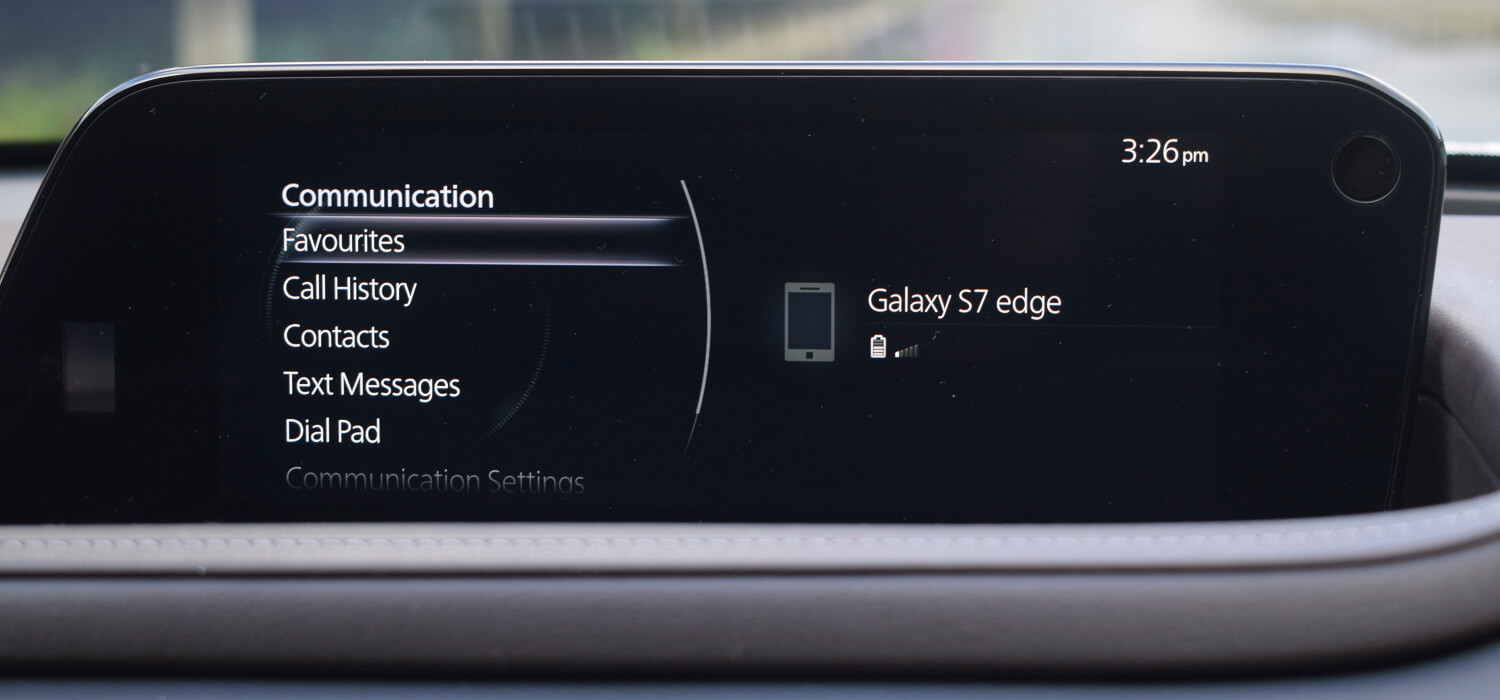
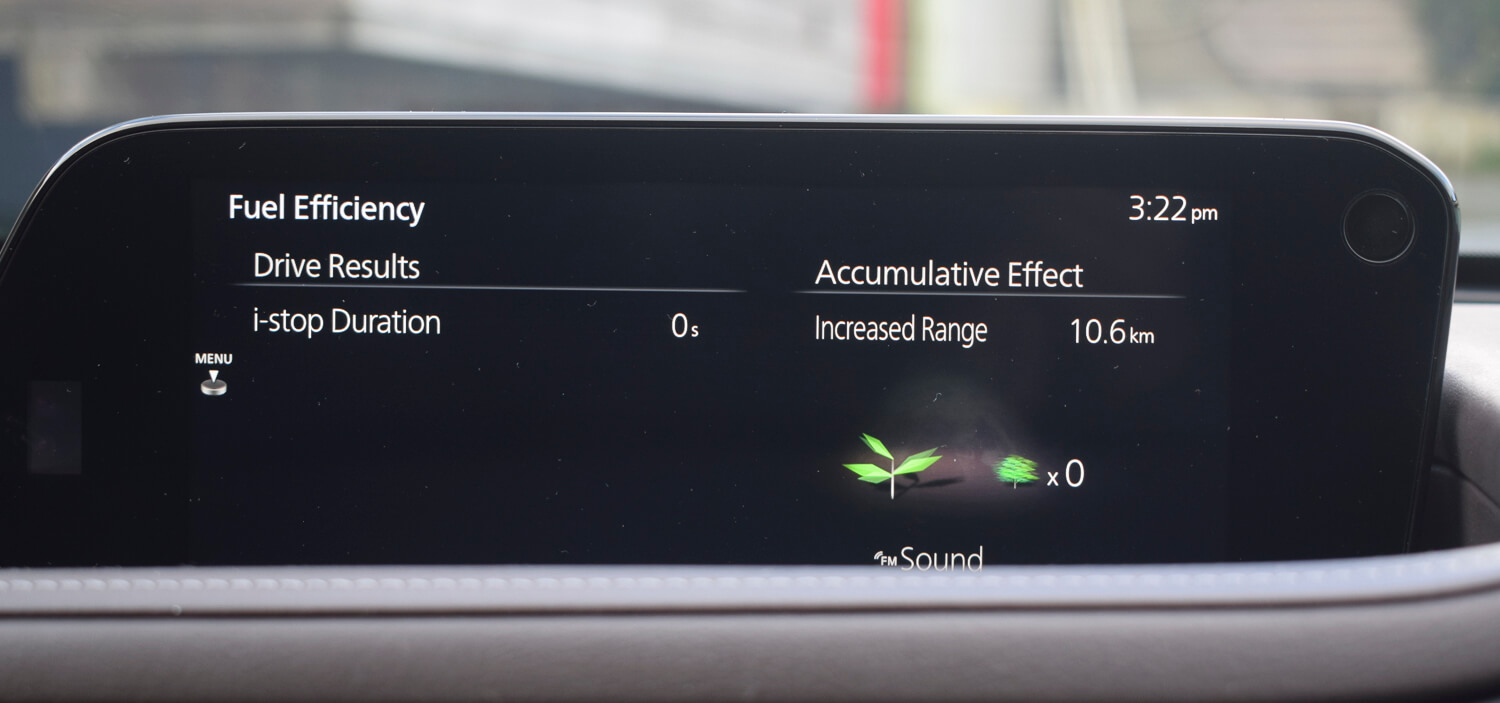
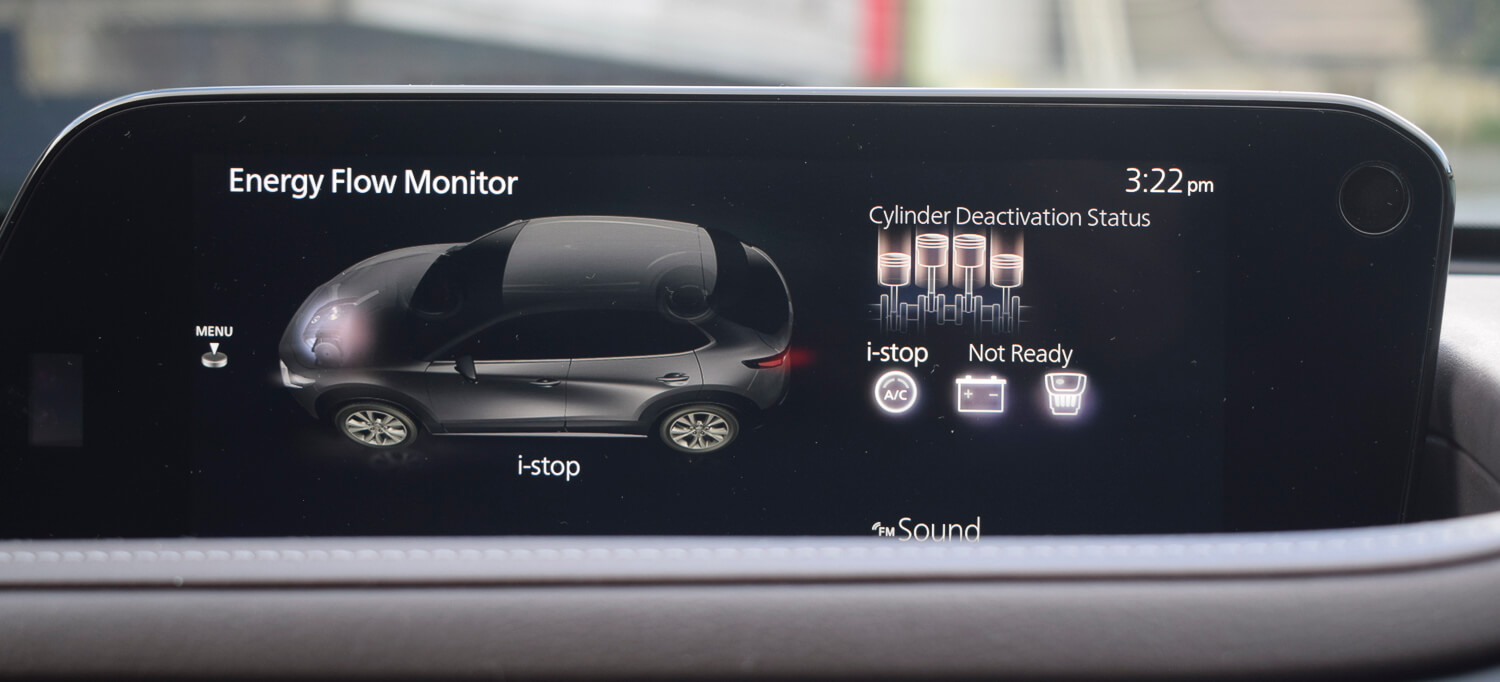
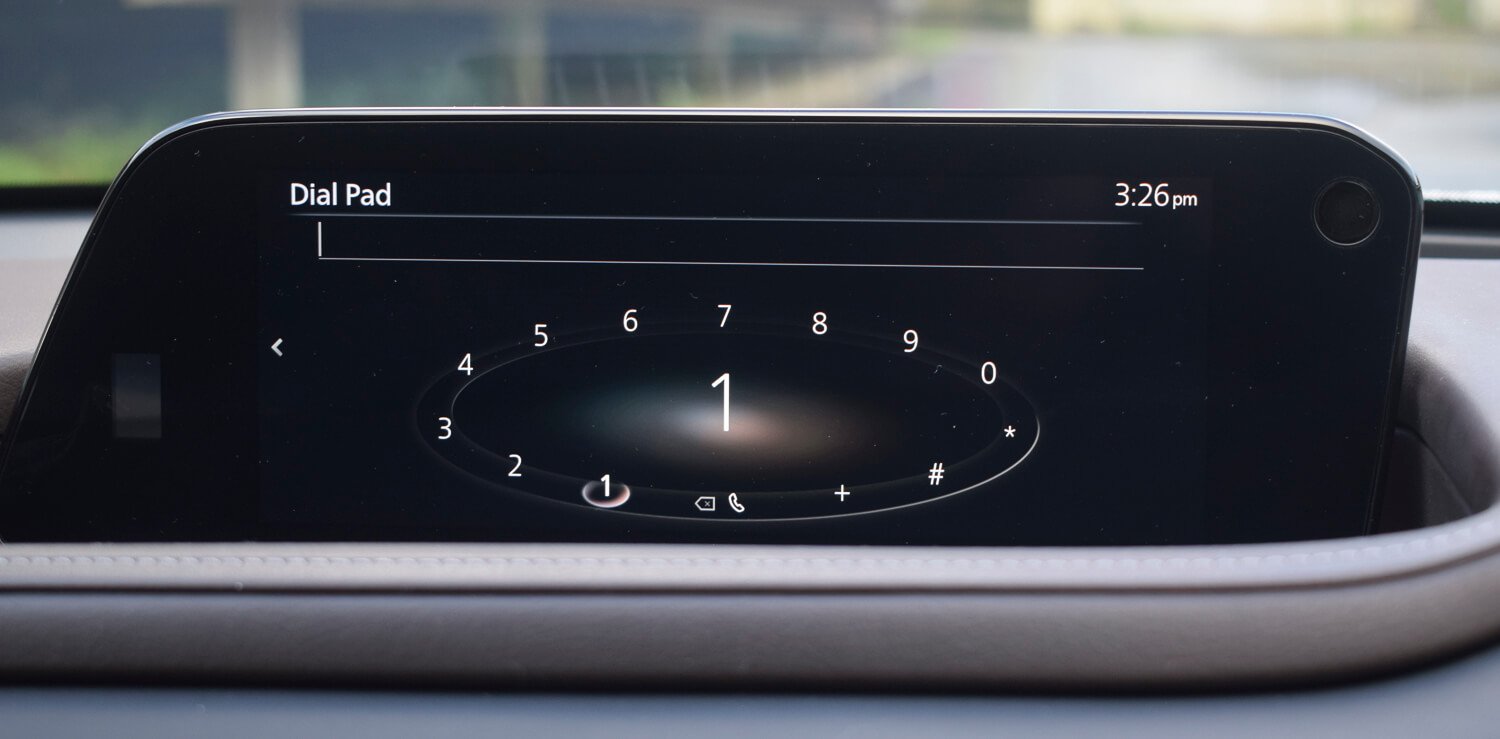
Of course, one of the best up-shots to this system is that the screen doesn’t get covered in fingerprints. Some manufacturers that use a touchscreen end up with an interior that’s finger-printy enough to be used as evidence to incriminate their owners.
The infotainment is paired to the CX-30 Limited’s 12-speaker Bose audio system. Something that buyers will notice is that there’s no speaker in the bottom of the door card. Instead, there are a set of smaller speakers mounted higher on the door and a set mounted to the A-pillar, apparently to achieve a sound wave that’s less interrupted when travelling to your ear. A Bose subwoofer also sits inside the spare tyre in the back. The system sounds great and has a nice warm sound that those familiar with Bose products will recognise. Led Zeppelin’s ‘when the levee breaks’ sounded particularly good through the system.
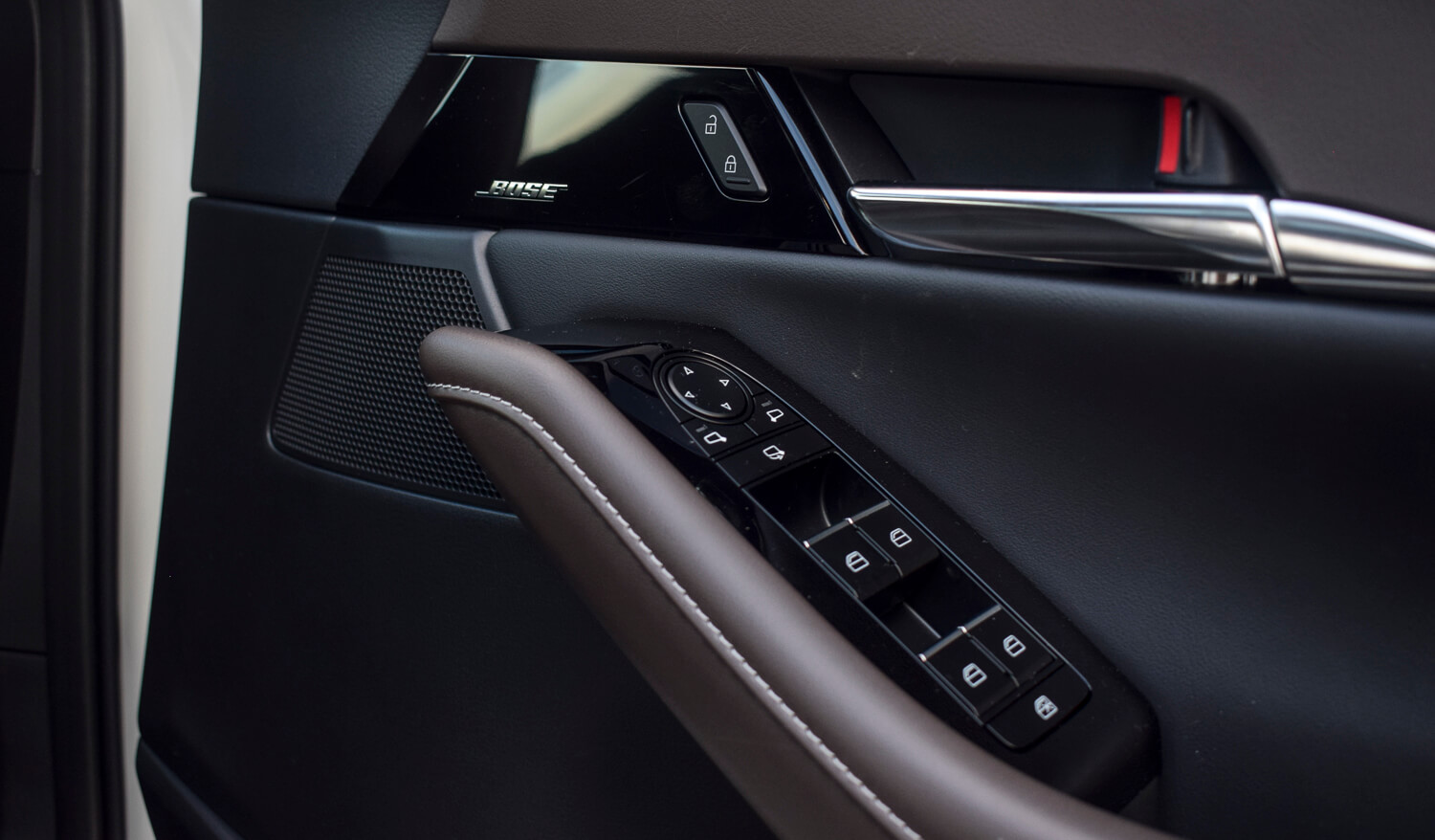
The boot is also a decent size at 422 litres. It’s definitely enough to haul a decent load, though I wouldn’t say it’s a dog friendly boot. I’m sure Fido will appreciate the supportive rear leather seats as much as any other passenger.
On the subject of the rear seats, they do continue to conform with Mazda’s standards of comfort. However, taller passengers may find themselves to be a bit short of rear-leg room, but shouldn’t have headroom issues.
Aside from the rear-legroom, there really wasn’t a lot to criticise with the CX-30’s interior. Although, I did have a few minor gripes.
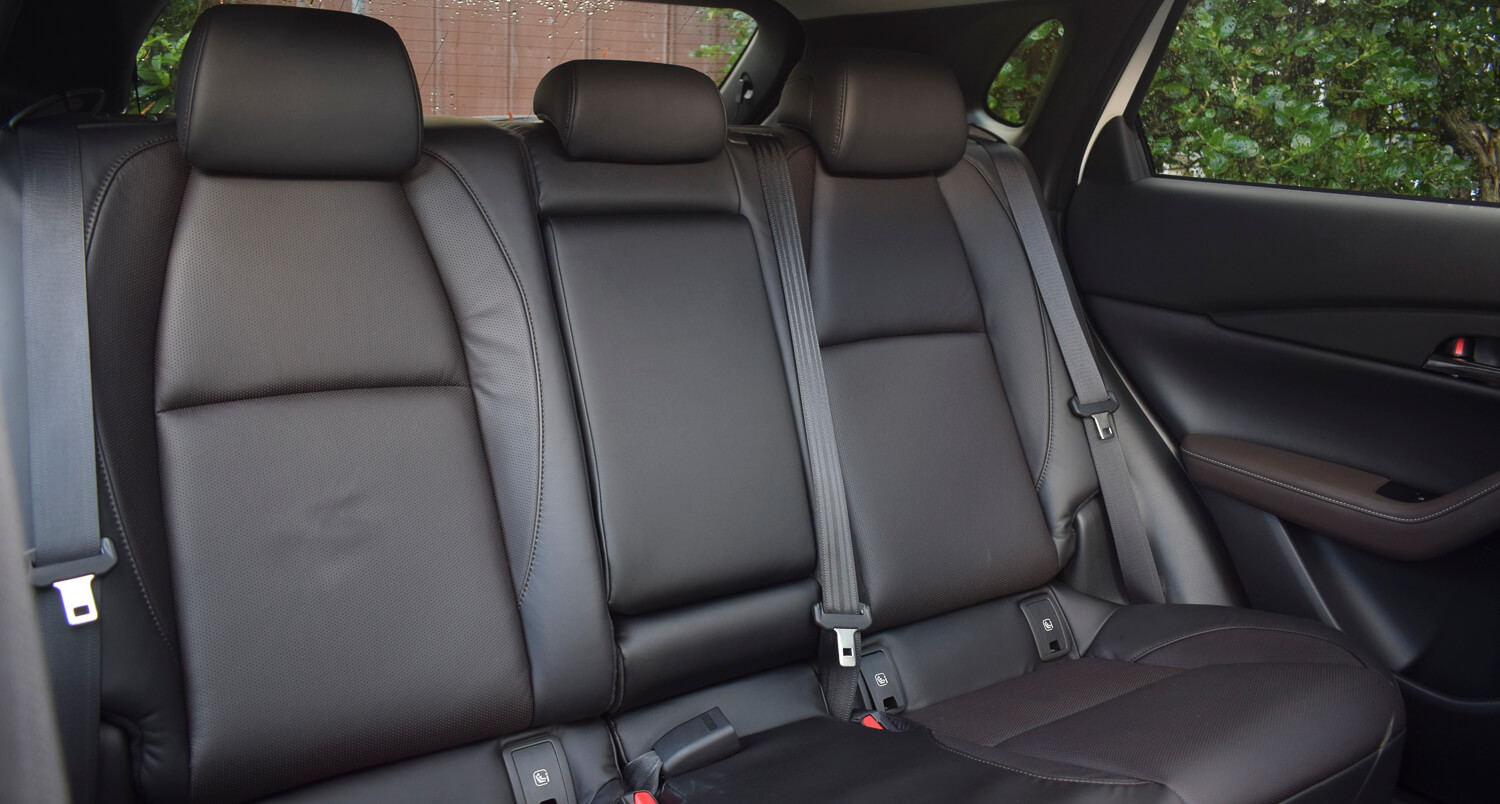
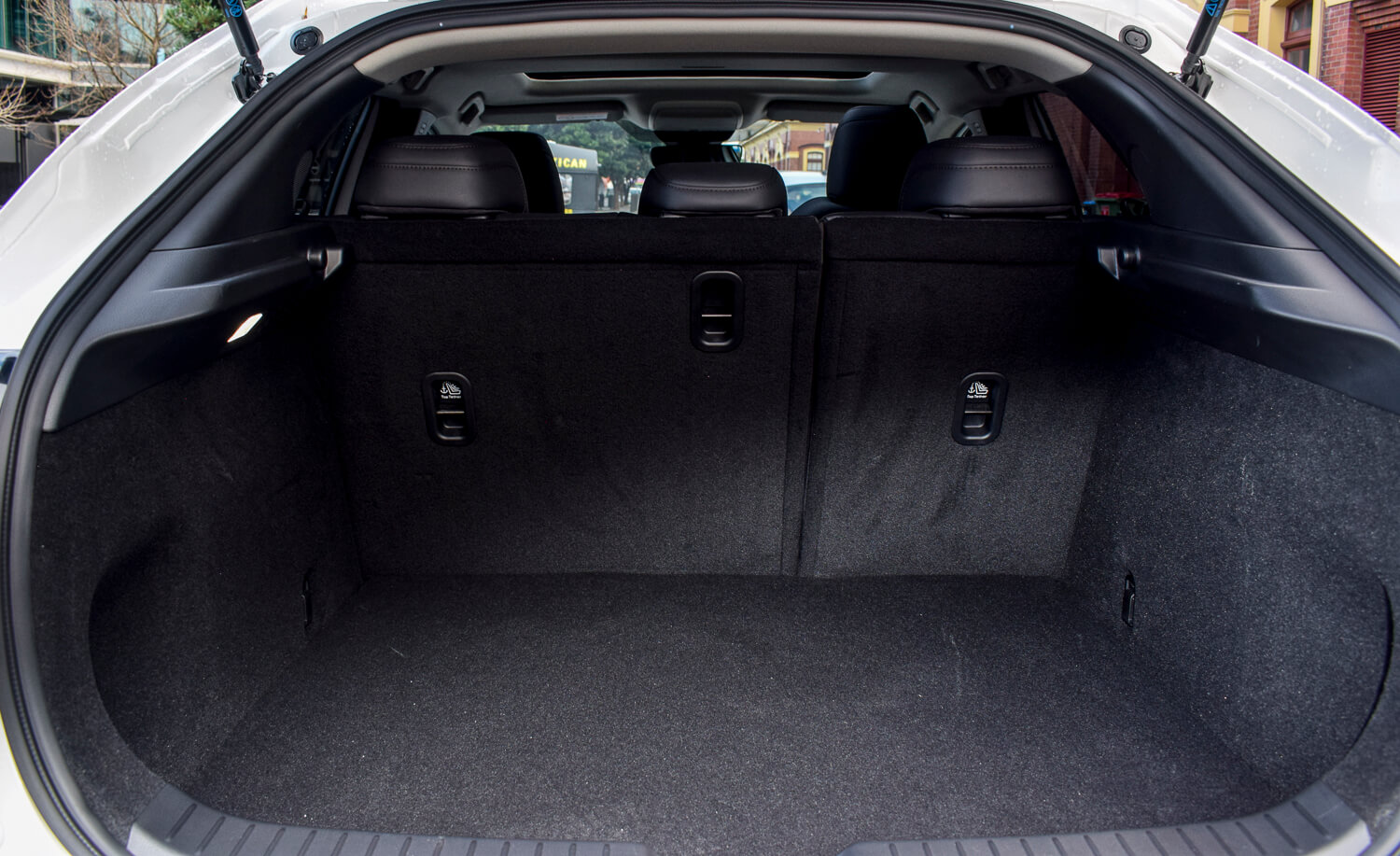
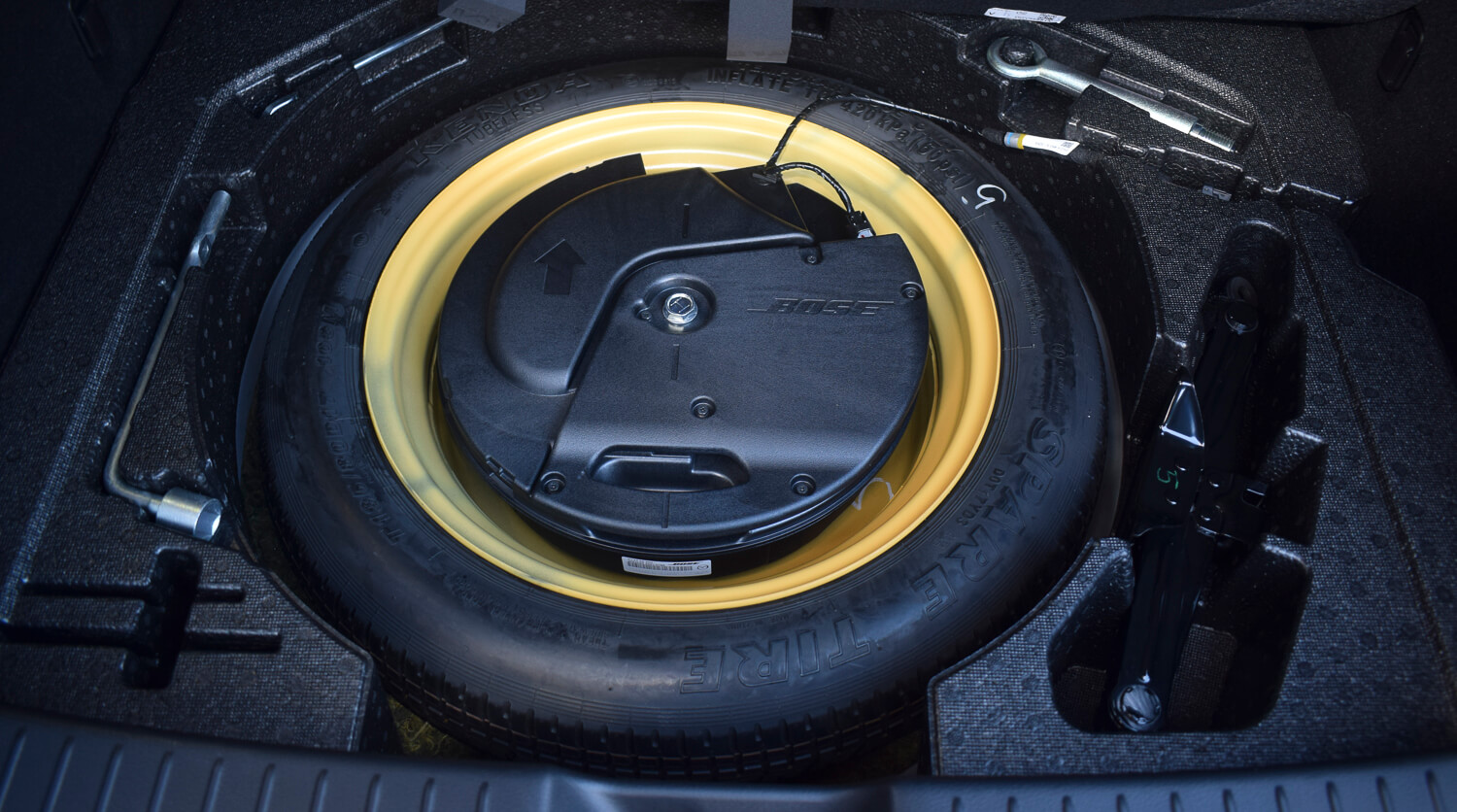
The key Mazda provides to the CX-30 looks perfectly fine, though it’s wrapped in cheap plastic and feels unsubstantial. Just holding the key certainly doesn’t give you an impression you’re about to get into an interior which borders on luxury car territory. This feels like an oversight given all the attention Mazda has paid to the CX-30’s interior, and especially for something you’re going to hold regularly. The black plastic also had some light scuffs on it, which would be normal for a mid-mileage used vehicle, but not for one with demonstrator mileage.
I can forgive the Limited for not having a power tailgate, but the key also doesn’t have a boot release button. I know Mazda is definitely saving some party tricks for the CX-30 Takami, but this seems like an odd thing to scrimp on.
The Limited also doesn’t have a wireless charging pad for a smartphone, and as mentioned earlier, only one power seat. This is disappointing given that it is currently the top of the range.
I did also note a slight design flaw with the centre console lid. Mazda’s designed it to slide back before opening upwards, which works nicely for the driver and front passenger. However, the hinge will whack into the knees of any passenger that sits in the centre rear seat and it doesn’t perfectly clear when the rear seats are flat.

I’m really nit-picking at very specific faults here. I also doubt many buyers will miss any of these features when browsing in this price segment, yet Mazda could have really completed the package by offering them.
Overall, the interior of the CX-30 Limited was an excellent place to spend time. Based on the quality of the interior alone, if you’d told me it was a car which cost another $10,000 over sticker, you’d likely believe it.
What’s The 2020 Mazda CX-30 Limited Like To Drive?
For those unfamiliar with Skyactiv engines, they sound a bit like a diesel when they first start-up. I did lift an eye-brow when I started the engine one cold morning, thinking that something in the engine had gone wrong.
This aside, the 2.5-litre 139kW/252Nm Skyactiv 4-cylinder in the Limited model is a smooth powertrain, which offers a healthy and consistent mid-range power delivery. I wouldn’t consider the CX-30 to be fast, but it doesn’t sit around either. Sport mode does noticeably perk-up the engine, useful for some passing manoeuvres. At the top-end, the engine did have a slight buzziness to it, though this car is seldom going to be spending time high in the rev-range.
Mazda had the sense to pair the engine options to a conventional torque-converter automatic. The auto is definitely the more durable choice, and in the long-run, you’ll thank them for it. Although you might get an incremental fuel economy gain with a CVT, the automatic in the Mazda is simply a lot smoother than any CVT. You barely notice a gear change when riding along in the CX-30.
Which next brings us to another one of the CX-30’s best qualities – the ride. It is excellent in the CX-30. Sure, it’s not quite on the level of air-suspension, but it’s easily segment-leading. In fact, the ride was one of the most complimented qualities I had from passengers, if it wasn’t about the interior.
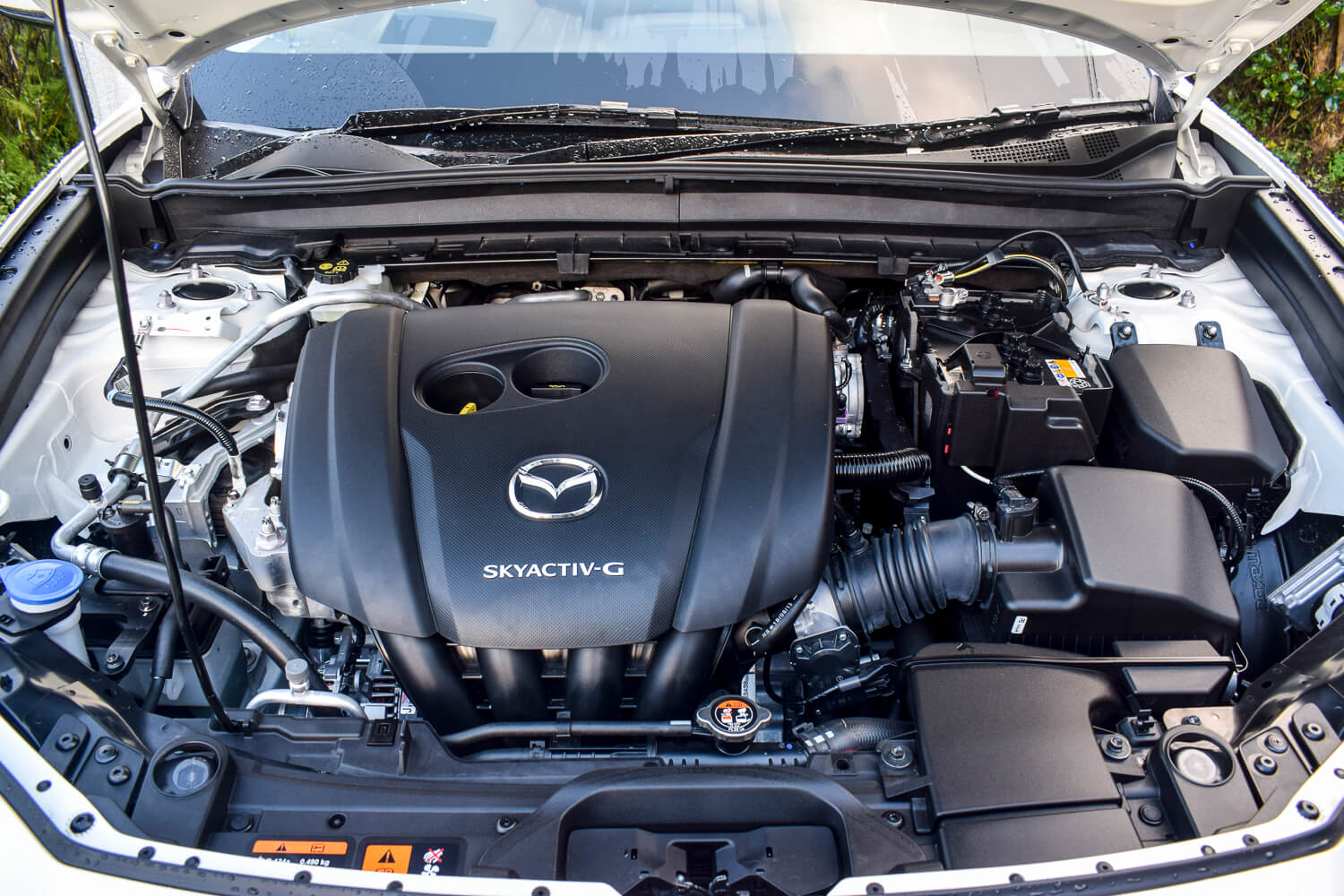
On my daily Wellington commute, there are series of gutters on the motorway just off the centennial highway headed south on State Highway 1. These are conveniently placed just after the corner exits and will generally upset the balance of many vehicles going over them at 100kph. The CX-30 on-the-other hand, just glided over them. Mazda utilises a system called G-Vectoring control, which according to them serves to “optimize the vertical load on each wheel”. Technical terms aside, this system has really helped Mazda sort-out the suspension dampening in the CX-30.
A plush ride is not the only thing that Mazda has managed to achieve from their set-up. The CX-30’s cornering ability will also be another pleasant surprise for drivers. Mazda’s G-Vectoring Plus system does a decent job of helping the CX-30 maintain its composure through corners. Mazda’s i-Activ all-wheel-drive system on the Limited would have undoubtedly helped out here. Overall, I was impressed by how the CX-30 handled through some faster-than-usual corners, and all with only a small amount of body roll. What is genuinely surprising is that Mazda has achieved all this with Macpherson strut suspension at the front and a Torsion beam rear. I definitely wasn’t expecting such good road manners from this set-up.
The interior is also well insulated from both road and engine noise. Seldom did you hear the engine or much wind noise at cruising speed, with engine noise only filtering in when lowdown in the rpms.
Although Mazda has done particularly well with the dynamics of the CX-30, the brakes did feel that they lacked some initial pedal bite. I found myself pressing the pedal slightly firmer than I was used to, but there was nothing inherently wrong with them. It’s a crossover after all, and not a 911 GT3!
During my time with the Mazda, I was getting an overall fuel consumption figure of around 8.5l/100km versus their combined fuel consumption of 6.8l/100km. With some more conservative driving, I was seeing this figure drop into the low 7s on individual trips. I took one individual test on my way home during a Wellington traffic incident that had caused multiple-hour delays city-wide. With a combination of some motorway speeds, crawling traffic and alternative routes home, my fuel consumption was 8.7l/100km. This is dead on Mazda’s urban fuel economy estimate. Pretty darn good overall!
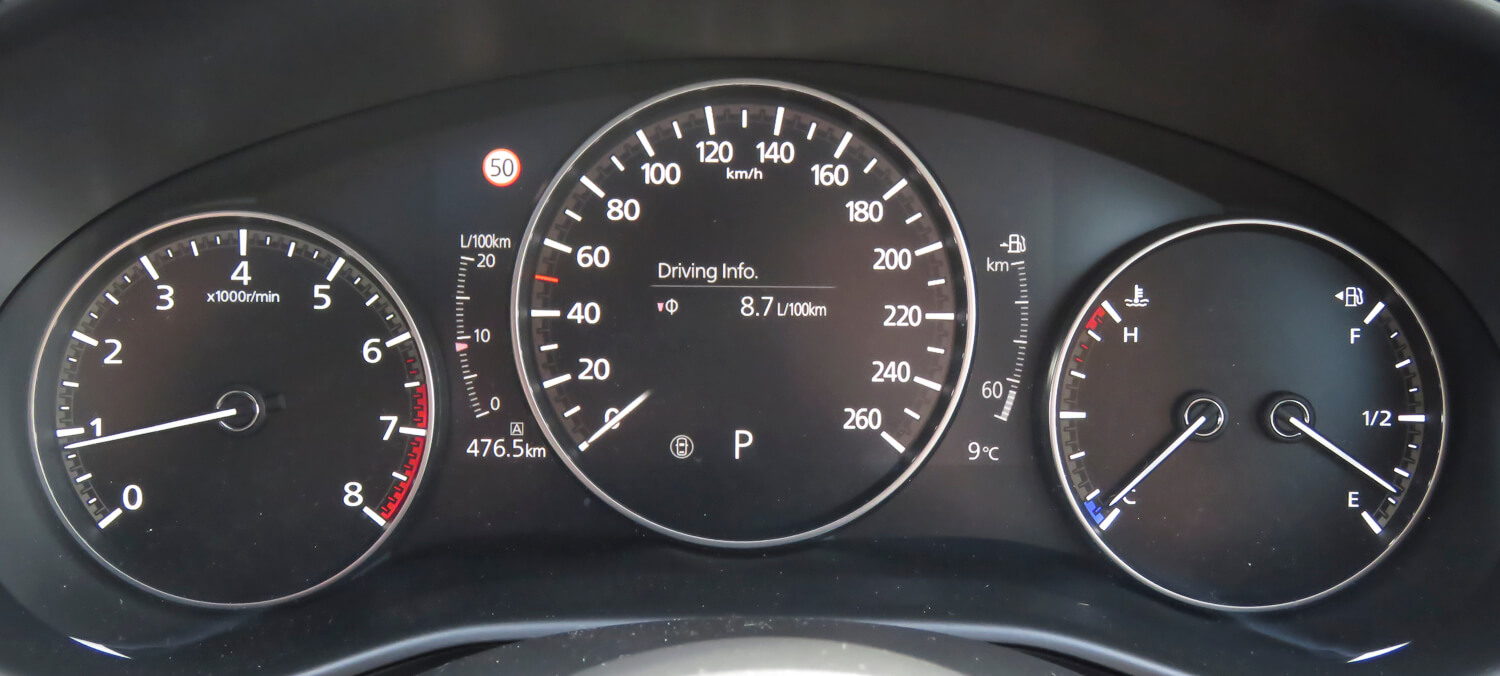
The CX-30 comes with the full array of safety technology. The best of Mazda’s safety tech is their lane keep assist. Unlike in some vehicles, where the lane-keep assist will fight you for taking a slightly aggressive line through a corner, the lane-keep assist system in the CX-30 is a very gentle correction and is easy to override. It allowed you to drive the car, without too much nannying. The traffic sign recognition worked quite well – it managed to pick-up the temporary speed signs through the Transmission Gully road works without a flaw.
Unfortunately, the same cannot be said for the radar cruise control. Our CX-30’s radar cruise worked well most of the time, although in some situations, I found that it reacted quite late to merging vehicles and vehicles changing into the lane in front of it. Also, the system would sometimes respond to the new vehicle quite abruptly by applying the brakes, rather than letting the speed adjust gradually. The overall outcome is a system which can be quite jerky, even if there is a decent distance between you and the other car. For this reason, I couldn’t invest my full confidence in it.
Seldom do any of these technologies work perfectly, even in high-end vehicles, although I do see room for Mazda to improve.
Aside from some jerkiness, the radar cruise does work down to a stop and can be restarted with a tap of the accelerator or a flick of the steering wheel controls.
The cross-traffic alert system also works well, despite the occasional false positive when turning at an intersection. It’s necessary for the CX-30, as the B-pillar is massive and creates a substantial blind spot looking out from the driver’s side. I was able to fix this slightly with some seat adjustment, but otherwise it was quite an impediment. This said, I found rear visibility to be good and Mazda has made the C-pillar blind spots better by adding small rear windows, plus adding-on Blind spot monitoring.
Finally, I appreciate that Mazda also has the sense to place hard buttons to switch off the safety items and the i-stop, rather than needing to toy around with various menus.
What’s The Competition For The 2020 Mazda CX-30 Limited?
The market is well served for the mid-40k SUV buyer. Here are some of the options:
| Brand/Model | Engine | Power (kW)/ Torque (Nm) | Fuel L/100km | Seats | Boot Space Litres | Towing Capacity Kg | Price |
| Volkswagen Tiguan TSI R-Line | 1.4 litre 4-cylinder | 110/250 | 6.8 | 5 | 615 | 1800 | $54,490 |
| Citroen C5 Aircross Shine | 1.6-litre 4-cylinder | 133/250 | 7.9 | 5 | 580 | 1500 | $53,990 |
| Peugeot 3008 GT-Line | 1.6-litre 4-cylinder turbo | 121/240 | 7.3 | 5 | 591 | – | $52,990 |
| Hyundai Tucson GDi Elite | 1.6-litre turbo 4-cylinder | 130/265 | 7.7 | 5 | 488 | 1600 | $52,990 |
| Seat Ateca FR | 2-litre turbo 4-cylinder | 140/320 | 6.9 | 5 | 485 | 1900 | $51,900 |
| Mazda CX-30 Limited | 2.5-litre 4-cylinder | 139/200 | 6.8 | 5 | 422 | 1200 | $50,990 |
| Jeep Compass Limited | 2.4 litre 4 cylinder | 129/229 | 9.7 | 5 | – | 1000 | $46,990 |
| Kia Seltos Limited AWD | 2.0-litre 4-cylinder | 130/265 | 7.6 | 5 | 433 | 1250 | $46,990 |
| Toyota RAV4 Limited | 2.0-litre 4-cylinder | 127/203 | 6.0 | 5 | 580 | 800 | $46,490 |
| Skoda Karoq Style | 1.5 litre 4-cylinder | 110/250 | 5.6 | 5 | 479 | 1500 | $44,990 |
| Hyundai Kona GDi Elite AWD | 1.6 litre turbo 4-cylinder | 130/265 | 6.7 | 5 | 361 | 1250 | $42,990 |
| Subaru XV Premium | 2 litre 4-cylinder | 115/196 | 8.6 | 5 | 310 | 1400 | $42,490 |
| Mitsubishi Eclipse Cross VRX AWD | 1.5-litre 4-cylinder turbo | 112/254 | 7.7 | 5 | 374 | 1600 | $40,990 |
| Honda HR-V Sport NT | 1.8-litre 4-cylinder | 105/172 | 6.9 | 5 | 437 | 800 | $40,990 |
| Toyota C-HR Limited Hybrid | 1.8 litre 4-cylinder | 72/142 | 4.3 | 5 | 318 | – | $39,390 |
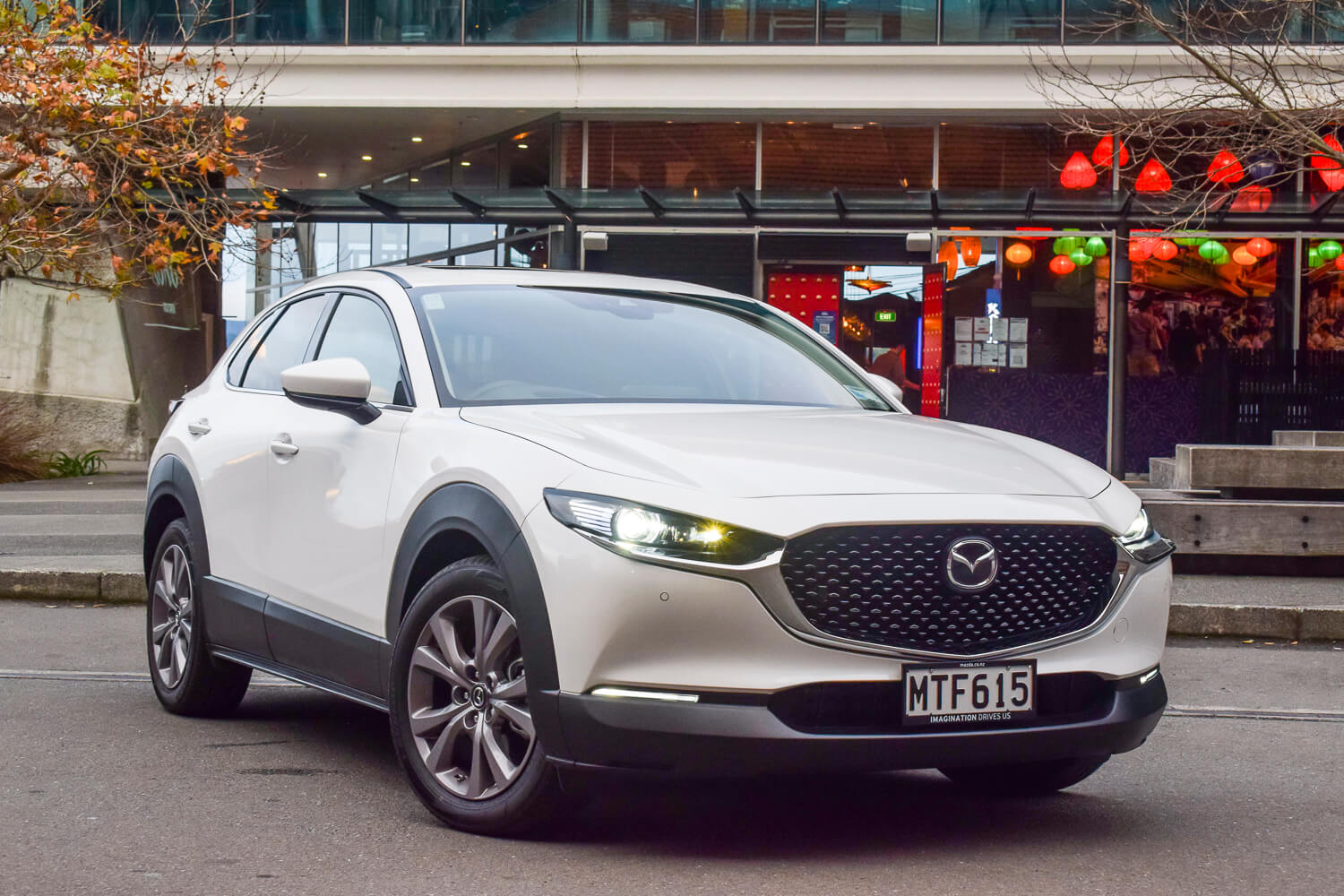
What’s The Pros And Cons For The 2020 Mazda CX-30 Limited?
PROS
- Ride quality
- Interior quality
- Exterior looks
- Awesome paint work
- Excellent instrument layout
- Good infotainment
- Bangin’ audio
- Uses a proper automatic
- Smooth gear shifts
CONS
- Missing some features to ‘complete’ the package
- Average key
- Unsettled Radar Cruise Control
- Large B pillar blind spot
- Brake pedal feel
- Not much rear legroom
2020 Mazda CX-30 Limited – Specifications
Mazda CX-30 Limited
| Vehicle Type | Small Crossover – SUV |
| Starting Price | $41,490 |
| Price as Tested | $50,990 |
| Engine | 2.5-litre 4-Cylinder Skyactiv Petrol |
| Power/Torque kW/Nm | 139/252 |
| Transmission | Six-speed automatic |
| Spare Wheel | Spacesaver |
| Kerb Weight, Kg | 1,544 |
| Length x Width x Height mm | 4395 x 1795 x 1540 |
| Cargo Capacity, litres | 422 |
| Fuel tank capacity litres | 48 |
| Fuel Economy L/100km | Advertised Spec – Combined – 6.8 Real World Test – Combined – 8.5 Low Usage: 0-6 / Medium Usage 6-12 / High Usage 12+ |
| Towing Capacity Kg, unbraked/braked | 600 /1200 |
| Turning circle, metres | 12 Small: 6-10m / Medium 10-12m / Large 12m+ |
| Warranty | 5 years warranty |
| ANCAP Safety Ratings | 5 Star |












































